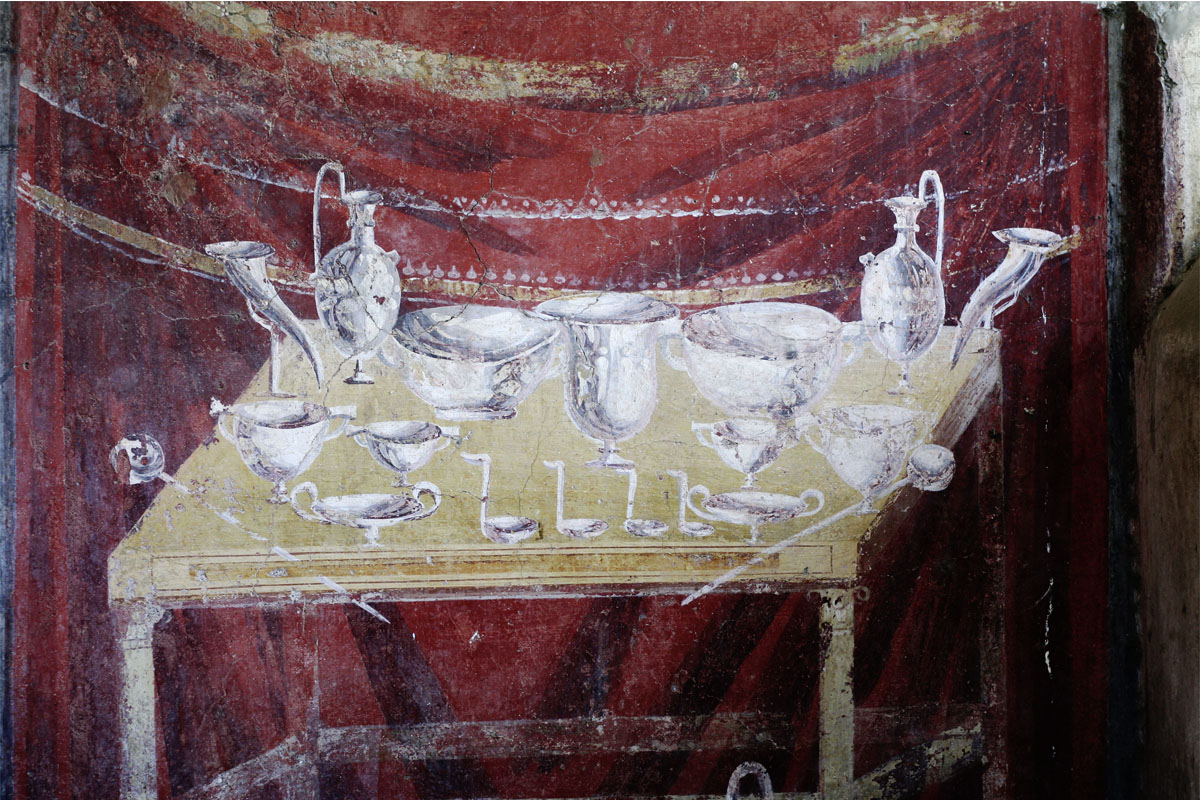Colours of Pompeii
COLOUR OF THE MONTH: VIOLETS
In Pompeji:
Vivid violet was the most masculine of all colours in antiquity. Its high price tag allowed the ruling classes – and members of the church – to demonstrate their power and status. In the Byzantine Empire, the imperial birth chamber was painted completely in purple. As a result, the first thing that imperial offspring saw was purple: the beauty of the world at its finest. Indeed, it was a firmly held belief that the colour would have a positive influence on the newborn.


IN THE MODERN AGE:
Although out of favour for a long time, violet made a spectacular comeback at the French royal court. Marie Antoinette embraced this unusual colour and brought it back into fashion, with the people following suit. On the other side of the English Channel, the British Navy came up with an unusual idea in the Second World War: it painted its ships violet, using this rather conspicuous colour as camouflage. Although this seems strange at first glance, it was actually effective.
IN THE HOME:
Today, violet is often regarded as feminine, which turns the history of the colour on its head. In our view, violet is too unique to be pigeonholed. The colour has a mysterious quality and always emits an individuality that defies definition. It always makes a statement and, depending on the nuance and the share of blue, violet can be either warm or cold. Grey/brown and black tones lend violet an exceptionally elegant touch. It is ideal for the design of a sophisticated dining room, but can also be used elsewhere, albeit as an accent colour in this case.

Colours of Pompeii
COLOUR OF THE MONTH: VIOLETS

In Pompeji:
Vivid violet was the most masculine of all colours in antiquity. Its high price tag allowed the ruling classes – and members of the church – to demonstrate their power and status. In the Byzantine Empire, the imperial birth chamber was painted completely in purple. As a result, the first thing that imperial offspring saw was purple: the beauty of the world at its finest. Indeed, it was a firmly held belief that the colour would have a positive influence on the newborn.

IN THE MODERN AGE:
Although out of favour for a long time, violet made a spectacular comeback at the French royal court. Marie Antoinette embraced this unusual colour and brought it back into fashion, with the people following suit. On the other side of the English Channel, the British Navy came up with an unusual idea in the Second World War: it painted its ships violet, using this rather conspicuous colour as camouflage. Although this seems strange at first glance, it was actually effective.

IN THE HOME:
Today, violet is often regarded as feminine, which turns the history of the colour on its head. In our view, violet is too unique to be pigeonholed. The colour has a mysterious quality and always emits an individuality that defies definition. It always makes a statement and, depending on the nuance and the share of blue, violet can be either warm or cold. Grey/brown and black tones lend violet an exceptionally elegant touch. It is ideal for the design of a sophisticated dining room, but can also be used elsewhere, albeit as an accent colour in this case.
VIOLETS
Aemilia
Fabia
Tarquinius
Claudius
Our Colour Range
WANT TO KNOW MORE?
OUR COLOURS ARE AVAILABLE FROM SELECTED RETAILERS AND PREMIUM FURNITURE STORES.
WANT TO KNOW MORE? OUR COLOURS ARE AVAILABLE FROM SELECTED RETAILERS AND PREMIUM FURNITURE STORES.
Diedenhofener Straße 1
D-54294 Trier
bella-casa@mille-deco.com
Colours of Pompeii is a brand of premium wall paints. The range is inspired by the colours that one would once have seen on a stroll through Pompeii. Each colour is timeless and modern – and can be combined in a variety of ways.
